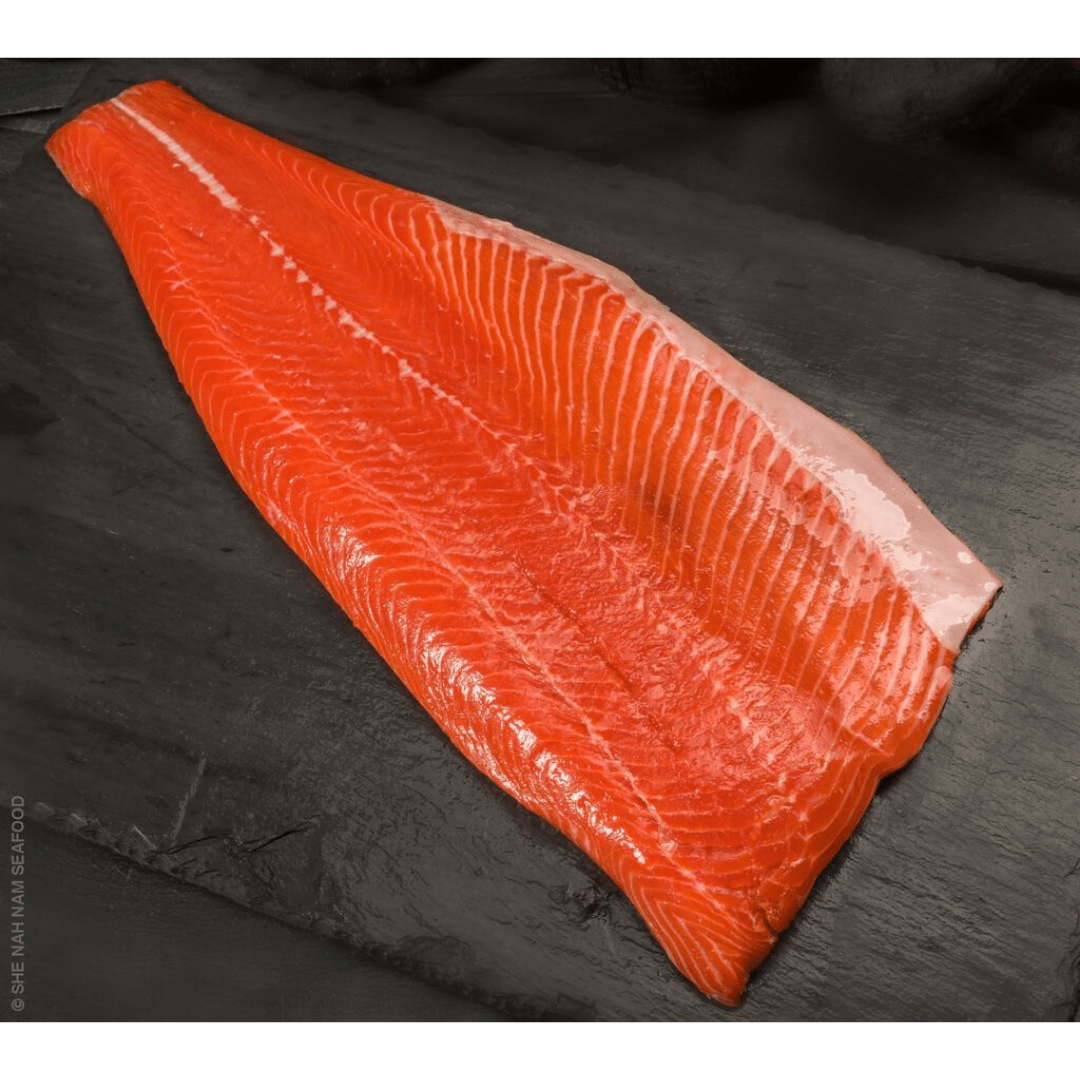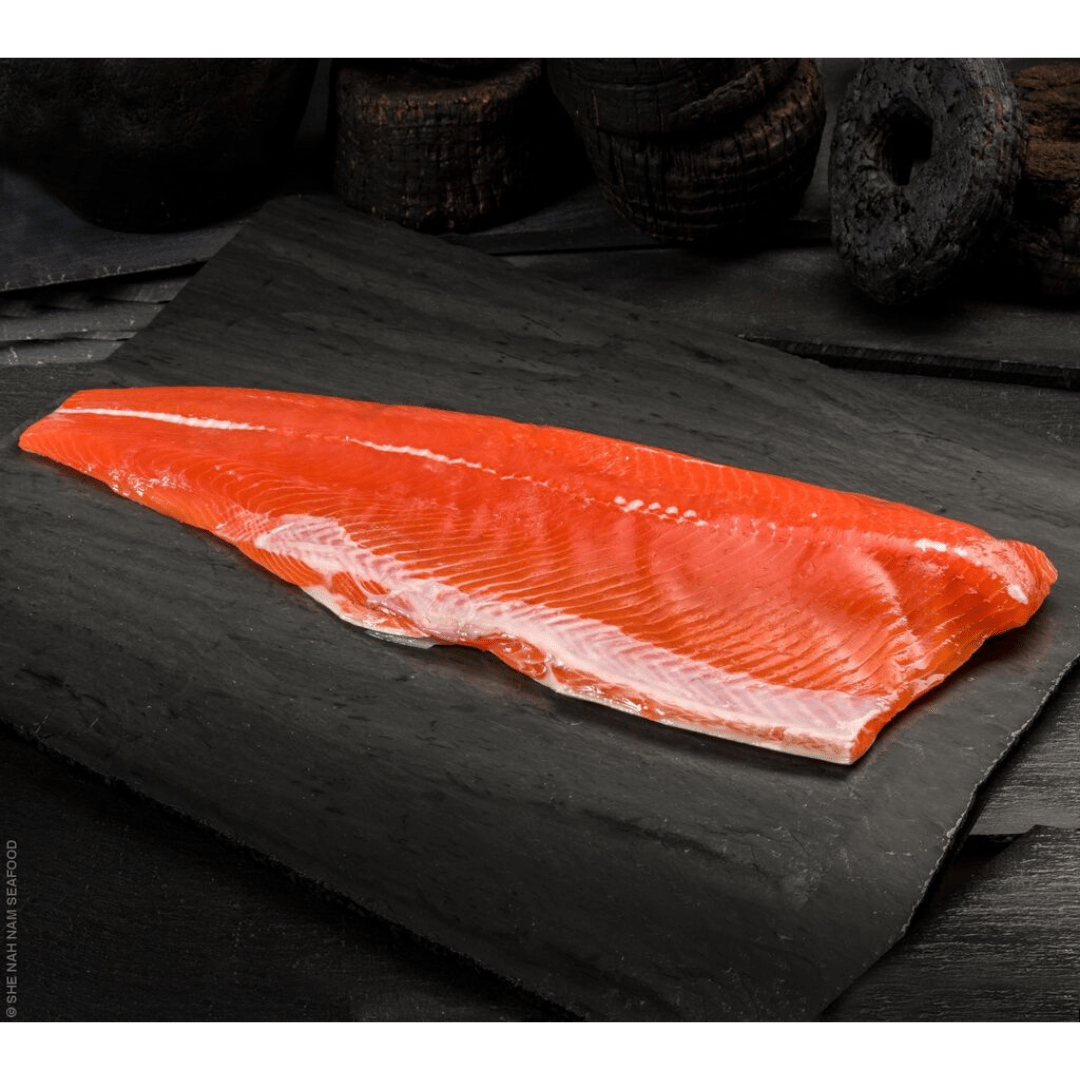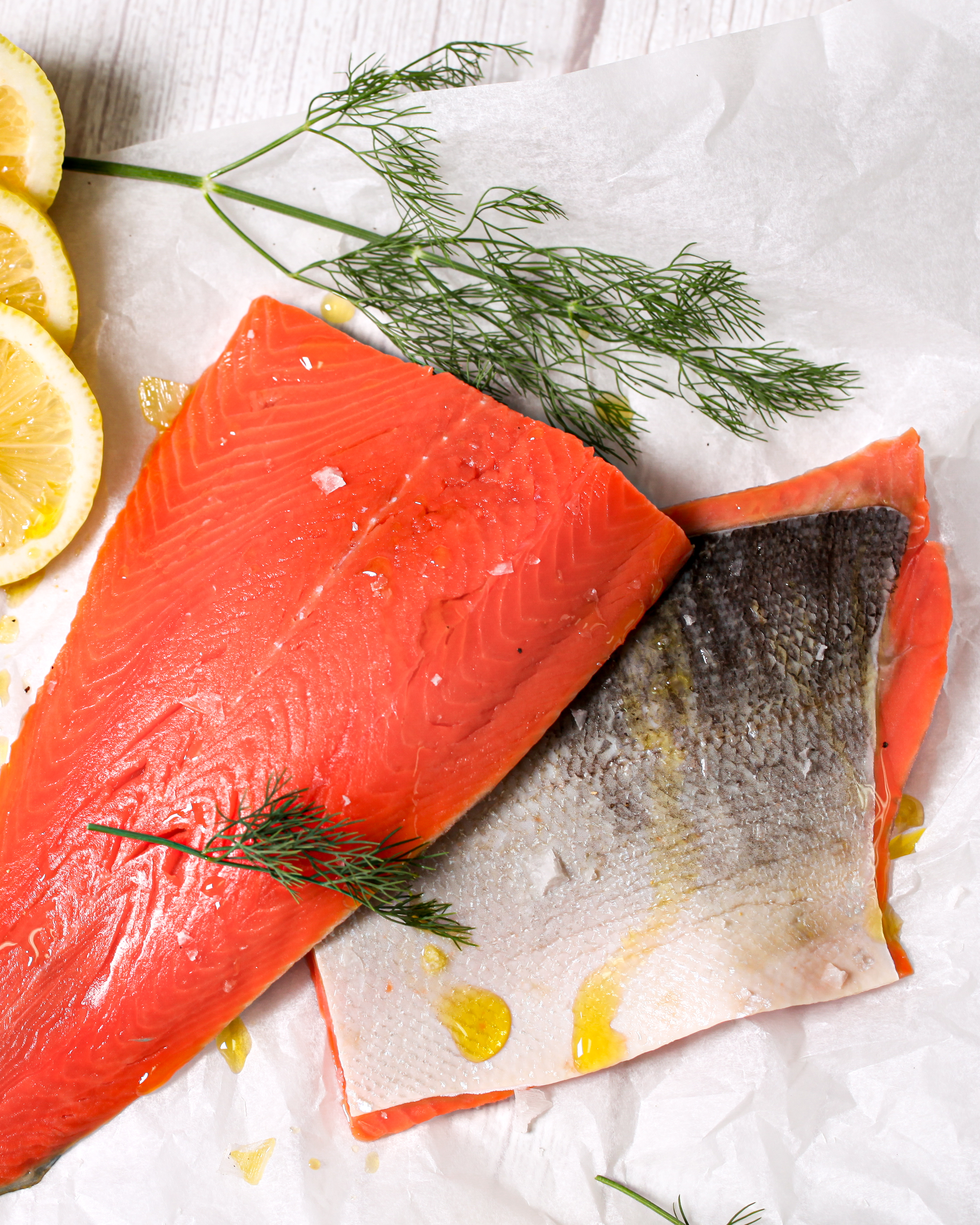Wild King Salmon Fillet
~฿2,430 per Fillet
Description Of all the Alaskan wild salmons, the king Salmon is the most prized of all. The king salmon is more fatty than the other wild salmon and while the texture is firm it melts in your mouth. Not available anywhere else in Thailand. Wild Alaskan king Salmon (also called Chinook) is the largest and most rich flavoured of all the species of wild salmon. These Kings are the rare white-fleshed variety. About 5% of all wild King salmon is white fleshed, which is genetically-determined. The flavor and nutritional profile is the same as the darker colored ones. You can read more about this here. Where do we get our wild king salmon? Wild-caught and directly imported from Alaska. Why are all of our fish wild-caught from rivers and oceans? King Salmon are carnivores and feed on shrimp and krill as well as little sea creatures called plankton and zooplankton. This is the natural diet of a wild salmon. Salmon and other types of fish that raised in fish-farms are not on a carnivorous diet since it is too costly and therefore not very profitable for the farmers. Fish that are raised in farms are given food pellets made from soybeans and corn that also has antibiotics added to the food to reduce the outbreak of diseases like parasitic sea lice (Click here for the source). In 2011 it was estimated that $436 million worth of farmed salmon in Norway was inedible due to parasitic sea lice breakouts in farmed fisheries (Click here for the source), which is still an ongoing issue in 2019. When we mention our king salmon is wild-caught from Alaska, we want our tribe members to know that they need not worry whether there's antibiotics or any other added toxins in our salmon. If you’re looking for a more economical cut of salmon, try our wild pink salmon. It's important to note that mercury and polychlorinated biphenyls (PCBs) are found in both farm-raised and wild-caught seafood due to industrial pollution that finds its way into lakes, rivers, and oceans. However, studies show that there are 8x fewer PCBs in wild-caught fish than their farmed siblings (Click here for the source). Large predatory fish that live 10+ years tend to build up more mercury as they age. The life expectancy of wild king salmon is anywhere from 2-8 years and as they feed on small fish, their mercury levels are much lower. We have tested our wild-salmon for mercury and we are happy to say our wild-sockeye salmon contain less than 0.000041g/kg. Sockeye salmon is one of the lowest mercury fish available. We have also listed a neat chart that lists which fish have a lower mercury rate compared to others. Finally, wild-caught king salmon tastes much better and has a better texture than farmed.
| Calories | 231 |
| Total Fat | 13 g |
| Total Protein | 26 g |
| Total Carbohydrates | 0 g |
| Total Fiber | 0 g |












